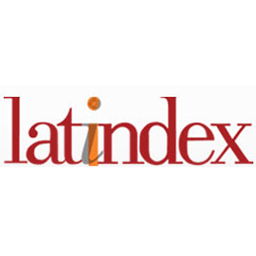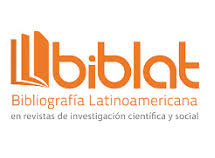El desarrollo del turismo de luciérnagas desde la Teoría Actor-Red
Resumen
El estudio describe las historias y procesos del surgimiento y desarrollo del turismo de luciérnagas en Nanacamilpa, Tlaxcala, México. El análisis muestra la diversidad de actores e intereses presentes e identifica dos principales controversias: una de tipo económica y otra ecológica, ambas configurando y reconfigurando la red emergente. A través del uso de recursos teóricos de la Teoría Actor-Red (TAR) se muestra cómo la presencia de estas dos controversias amenaza de manera constante la vida de las luciérnagas y, por tanto, la consolidación de la red de turismo de luciérnagas como una red movilizada. El estudio permite mostrar, la compleja relación que existe entre la naturaleza, las personas y los efectos del turismo, mostrando el potencial que la TAR tiene para estudiar fenómenos complejos y dinámicos donde participan actores heterogéneos.
Palabras clave
Texto completo:
PDFReferencias
Becher, T., & Trowler, P. R. (2001). Academic Tribes and Territories. 2da ed. Buckingham, Society for Research into Higher Education & Open University Press p.240
Benali, A., & Ren, C. (2019). Lice work: Non-human trajectories in volunteer tourism. Tourist Studies, 19(2), 238–257. https://doi.org/10.1177/1468797619832311
Callon, M. (1986). Some elements of a sociology of translation: Domestication of the scallops and the fishermen of St Brieuc Bay. Power,
Action and Belief: A New Sociology of Knowledge, In J. Law, [196–223].
Callon, M. (2008). La dinámica de las redes tecno-económicas. En H. Thomas y A. Buch (Coor), Actos, actores y artefactos: sociología de la tecnología (pp. 147-184). Bernal: Universidad Nacional de Quilmes.
Callon, M & Latour, B. (1981). Unscrewing the Big Leviathan: How Actors macro-structure reality and How Sociologists Help them to do so, en Knorr Cetina, K. D. and Cicourel (eds), Advances in Social Theory and Methodology: Toward an integration of Micro and Macro-sociologies, Routledge and Kegan Paul.
Cohen, E., & Cohen, S. A. (2012). Current sociological theories and issues in tourism. Annals of Tourism Research, 39(4), 2177–2202.
Cohen, E. & Cohen, S.A. (2015). Beyond Eurocentrism in tourism: A paradigm shift to mobilities. Tourism Recreation Research, 40(2), 157-168.
Choong, M. K., Galgani, F., Dunn, A., & Tsafnat, G. (2013). Automatic Evidence Retrieval for systematic reviews. Journal of Chemical Information and Modeling, 53(9), 1689–1699.
Chi, C. G.-Q., & Qu, H. (2008). Examining the structural relationships of destination image, tourist satisfaction and destination loyalty: An integrated approach. Tourism Management, 29(4), 624–636.
CONANP. (07/12/2016). Áreas Destinadas Voluntariamente a la conservación. Disponible en: http://www.conanp.gob.mx/rendicion_cuentas/areas_certi.php. Consultado el 06/11/ 2017.
Cordero, C.R., & López T.G., (2015). Historia Natural y Genética de Poblaciones de la luciérnaga endémica Macrolampis Palaciosi, en el Municipio de Nanacamilpa de Mariano Arista, Tlaxcala: Una Propuesta de Investigación con fines de conservación y uso sostenido. Departamento de Ecología Evolutiva, Instituto de Ecología, UNAM, México.
Cloke, P. & H. C. Perkins. (2005). Cetacean Performance and Tourism in Kaikoura, New Zealand. Environment and Planning D: Society & Space 23(6), [903–924].
De, U. K., & Chauhan, K. (2014). Degradation of Forest and Biodiversity in Sariska National Park, India and the Responsible Factors. SSRN Electronic Journal, (September 2017). https://doi.org/10.2139/ssrn.2472569
Ferdinand, N., & Williams, N. L. (2018). The making of the London Notting Hill Carnival festivalscape: Politics and power and the Notting Hill Carnival. Tourism Management Perspectives, 27, 33–46.
Franklin, A. (2003). Tourism: A guide. London: Sage.
Franklin, A. (2004). Tourism as ordering: Towards a new ontology of tourism. Tourist Studies, 4, [277–301].
Franklin, A., & Crang, M. (2001). The trouble with tourism and travel theory? Tourist Studies, 1(1), 5–22.
González, J. (2017). Actores del turismo experiencias alternativo. Un acercamiento a sus perfiles psicosociales. Regiones y desarrollo sustentable, 17 (33), 13-26.
Guttentag, D., (2015). Airbnb: disruptive innovation and the rise of an informal tourism accommodation sector, Current Issues in Tourism, 18:12, 1192-1217, DOI: 10.1080/13683500.2013.827159
Haldrup, M., & Larsen, J. (2006). Material cultures of tourism. Leisure Studies, 25(3), [275–289].
Hjalager, A. M. (2010). A review of innovation research in tourism. Tourism Management, 31(1), 1–12.
Jóhannesson, G. T. (2005). Tourism Translations: Actor–Network Theory and Tourism Research. Tourist Studies (2), [133-150].
Kim, S. S., Lee, H., & Chon, K.-S. (2010). Segmentation of Different Types of Hallyu Tourists Using a Multinomial Model and Its Marketing Implications. Journal of Hospitality & Tourism Research, 34(3), 341–363.
Krajíčková, A. (2018). VLIV CESTOVNÍHO RUCHU NA SOCIOEKONOMICKÉ A ENVIRONMENTÁLNÍ PROSTŘEDÍ MALTY: VNÍMÁNÍ MLADÝCH. Geographical Information, 22(1), 233–245.
Larson, L. R., & Poudyal, N. C. (2012). Developing sustainable tourism through adaptive resource management: A case study of Machu Picchu, Peru. Journal of Sustainable Tourism, 20(7), 917–938.
Latour, B. (1982). Give me a laboratory and I will move the world in K. Knorr et M. Mulkay (editors) Science Observed, Sage, 1983, pp.141-170 [New edition slighly abridged in Mario Biagioli (editor) Science Studies Reader, London Routledge, 1999]
Latour, B. (1988). The Pasteurization of France, Harvard University Press, Cambridge, MA. 288 pages.
Latour, B. (2008). Reensamblar lo social: una introducción a la teoría del actor-red. 1e ed. Buenos Aires, Manantial p.390
Latour, B. (2017a). Cara a cara con el planeta: una nueva mirada sobre el cambio climático alejada de las posiciones apocalípticas. 1e ed. Buenos Aires, Siglo Veintiuno editores p.351
Latour, B. (2017b). Lecciones de sociología de las ciencias. 1e ed. Barcelona, Arpa editores p.318
Law, J. (ed.) (1986). Power, Action, and Belief: A New Sociology of Knowledge?. Routledge & Kegan Paul.
Law, J. (1999). After Ant: Complexity, Naming and Topology. The Sociological Review, 47(1_suppl), 1–14.
Law, J. (1992). Notes on the theory of the actor-network: Ordering,
strategy, and heterogeneity. Systems Practice 5, 379–393.
Law, R., Buhalis, D., & Cobanoglu, C. (2014). Progress on information and communication technologies in hospitality and tourism. International Journal of Contemporary Hospitality Management, 26(5), 727–750.
Lewis, S. M. et Cratsley, C. K.. (2008). Flash Signal Evolution, Mate Choice, and Predation in Fireflies. Annual review of entomology.
Lowell, J., & Adams, P. (2017). The routes of a plant: ayahuasca and the global networks of Santo Daime, Social & Cultural Geography, 18:2, 137-157, DOI: 10.1080/14649365.2016.1161818
Malik, M., Al Rawabi, T., Al Kimyani, N., & Al Hadrami, S. (2017). Residents Perception of Tourism Impacts in A Dhakhiliyah Region of Sultanate of Oman. Ottoman Journal of Tourism and Management Research, 2(3), 119–134. https://doi.org/10.26465/ojtmr.2017239498
Manyara, G. and Jones, E. (2007) Community-Based Tourism Enterprises Development in Kenya: An Exploration of Their Potential as Avenues of Poverty Alleviation. Journal of Sustainable Tourism, 15, 628-644.
Mbaiwa, J. (2011). Hotel companies, poverty and sustainable tourism in the Okavango Delta, Botswana, World Journal of Entrepreneurship, Management and Sustainable Development, Vol. 7 Iss 1 pp. 47 - 58.
McMaster T., Vidgen R.T., & Wastell D.G. (1997) Technology transfer: diffusion or translation?. In: McMaster T., Mumford E., Swanson E.B., Warboys B., Wastell D. (eds) Facilitating Technology Transfer through Partnership. IFIP Advances in Information and Communication Technology. Springer, Boston, MA.
McLennan, C., Ruhanen, L., Ritchie, B., & Pham, T. (2012). Dynamics of Destination Development: Investigating the Application of Transformation Theory. Journal of Hospitality & Tourism Research, 36(2), 164–190.
Naylor LM, J. Wisdom M, G. Anthony R. (2009) Behavioral responses of North American elk to recreational activity. J Wildl Manag. 2009;73: 328–338.
Paget, E., Dimanche, F., y Mounet, J. P. (2010). A tourism innovation case. An actor-network approach. Annals of Tourism Research, 37(3), [828–847]. Consultado el 12/07/2018. https://doi.org/10.1016/j.annals.2010.02.004
Pongajarn, C. Van der Duim, R., & Peters, K. (2018). Floating markets in Thailand: same, same, but different, Journal of Tourism and Cultural Change 16:2, 109-122, DOI: 10.1080/14766825.2016.1253704
Rankin, B.L., Ballantyne, M., & Pickering, C.M. (2015). Tourism and recreation listed as a threat for a wide diversity of vascular plants: a continental scale review. Journal of environmental management, 154, 293-8 .
Ramírez-Albores, J. E. (2013). Riqueza y diversidad de aves en un área de la faja volcánica transmexicana, Tlaxcala, México. Acta Zoológica Mexicana, 3, [486–512].
Ramírez-Albores, J. E., León-Paniagua, L., y Navarro-Sigüenza, A. G. (2014). Mamíferos silvestres del Parque Ecoturístico Piedra Canteada y alrededores, Tlaxcala, México; con notas sobre algunos registros notables para el área. Revista Mexicana de Biodiversidad, 85(1), [48-61].
Ren, C., A. Pritchard and N. Morgan. (2010). Constructing Tourism Research: A Critical Inquiry. Annals of Tourism Research 37(4), [885–904].
Ren, C. (2011). Non-human agency, radical ontology and tourism realities. Annals of Tourism Research, 38(3), [858–881].
Rivera, G., & Cox, A. M. (2016). An actor-network theory perspective to study the non-adoption of a collaborative technology intended to support online community participation. Academia Revista Latinoamericana de Administración, 347-365.
Rodger, K., Moore, S. A., y Newsome, D. (2009). Wildlife Tourism, Science and Actor Network Theory. Annals of Tourism Research, 36(4), [645–666]. Consultado el 02/07/2018. https://doi.org/10.1016/j.annals.2009.06.001
Secretaria de Turismo del Estado de Tlaxcala (2017). Líneas de acción de desarrollo turístico para el Municipio de Nanacamilpa y su zona de influencia del Taller de SECTURE, Tlaxcala, México.
Shimoyamada, S. (2019). Hybrid production of gardens: an actor–network analysis of heterogeneous power relations, Tourism Geographies, 21:2, 195-213, DOI: 10.1080/14616688.2018.1457075
Steven, R., Castley, JG. (2013). Tourism as a threat to critically endangered and endangered birds: global patterns and trends in conservation hotspots. Biodivers Conserv 22, 1063–1082 (2013).
Sturød, A. G. (2019). From coal to cool: Reordering nature in post-Soviet Kyrgyzstan. Tourist Studies, 19(2), 141–163.
Tatnall, A., & Burgess, S. (2004). Using Actor-Network Theory to Identify Factors Affecting the Adoption of E-Commerce in SMEs. In Singh, M., & Waddell, D. (Ed.), E-Business Innovation and Change Management (pp. 152-169). IGI Global.
Tribe, J. (2010). Tribes, territories and networks in the tourism academy. Annals of Tourism Research, 37(1), 7–33.
UNWTO. (2019). UNWTO Annual Report 2019, Disponible en: https://doi.org/10.18111/9789284418725 Consultado el 02/02/2020.
Van der Duim, R. (2005). Tourismscapes. An Actor–Network Perspective on Sustainable Tourism Development. (Tesis de Doctorado) Wageningen University, Wageningen.
Van der Duim, R. Ampumuza, C & Ahebwa, W. (2014). Gorilla Tourism in Bwindi Impenetrable National Park, Uganda: An Actor-Network Perspective, Society & Natural Resouces, 27:6, 588-601.
Van der Duim, R., Ren, C., & Johannesson, G. (2012). Ordering, materiality, and multiplicity: Enacting Actor-Network Theory in tourism. Tourist Studies, 13(1), [3–20]. Consultado el 02/07/2018.
Vance, E., & Kuri, SR., (2017). How Fireflies are Keeping this Tiny Mexican Town Alive. National Geographic, www.nationalgeographic.com/photogra- phy/proof/2017/08/firefly fields-mexico-tourism-ecotourism/.
WTTC. (2019). WTTC Economic impact report 2019, Disponible en: https://wttc.org/Research/Economic-Impact Consultado el 02/02/2020.
Zamora-Martínez, M., Montoya Esquivel, A., Velasco Bautista, E., Kong
Luz, A., Nieto Pascual de Pola, C., Calderón Pichón, L., Méndez Espinoza, C., Segundo Maya, R. (2006). Potencial Productivo De Los Hongos Silvestre Comestibles En Los Bosques Templados De Tlaxcala* (2004-2006). SEMARNAT-PRO ÁRBOL CONACYT- INIFAP-GOBIERNO FEDERAL.
Zaragoza, S. (2012) Macrolampis palaciosi sp. nov. (Coleoptera: Lampyridae: Photininae), Tlaxcala, México. Dugesiana 19(2), [117-121].
Zaragoza-Caballero, Santiago, & Pérez-Hernández, Cisteil X.. (2014). Biodiversidad de cantaroideos (Coleoptera: Elateroidea [Cantharidae, Lampyridae, Lycidae, Phengodidae, Telegeusidae]) en México. Revista mexicana de biodiversidad, 85(Supl. ene), S279-S289. https://dx.doi.org/10.7550/rmb.31748
Enlaces refback
- No hay ningún enlace refback.
Copyright (c) 2021 Regiones y Desarrollo Sustentable

Este obra está bajo una licencia de Creative Commons Reconocimiento 4.0 Internacional.
REGIONES Y DESARROLLO SUSTENTABLE
Año XXIII, No. 44, Enero-Diciembre, 2023, es una revista de publicación continua editada por El Colegio de Tlaxcala, A.C., Avenida Melchor Ocampo No. 28, Col. San Pablo Apetatitlán, Apetatitlán de Antonio Carvajal, Tlaxcala, C. P. 90600 Tel. 52 (246) 46 4 52 33, ext. 1135, http://www.coltlax.edu.mx/openj/index.php/ReyDS, rev_regionesydesarrollosustentable@coltlax.edu.mx Editor responsable: Arturo Juárez Martínez. Reserva de Derechos al Uso Exclusivo No., ISSN:2594-1429, otorgados por el Instituto Nacional de Derecho de Autor. Responsable de la última actualización de este número, Departamento de Ediciones de El Colegio de Tlaxcala, A.C., Arturo Juárez Martínez, Avenida Melchor Ocampo No. 28, Col. San Pablo Apetatitlán, Apetatitlán de Antonio Carvajal, C.P. 90600, fecha de última modificación: 02 de febrero de 2024.







